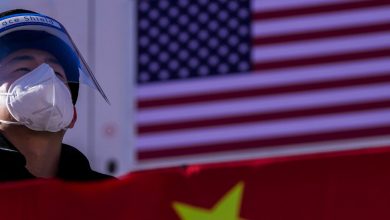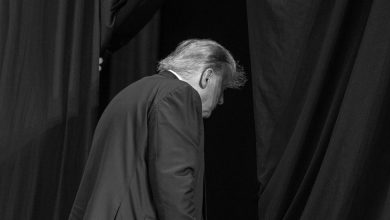The Shame of Uvalde

This week,an investigative committee of the Texas House of Representatives released a report about what went wrong during the shooting in Uvalde. People hungry for new information might come away dissatisfied. As my colleagues J. David Goodman and Edgar Sandoval reported for The Times on Sunday, the committee’s report doesn’t alter the overall understanding of events that much of the public already has: The May 24 massacre at Robb Elementary School was accompanied by a law enforcement meltdown that may have prevented at least some wounded teachers and students from receiving needed medical attention.
But given the conflicting and at times flat-out false accounts that have been given about what happened in the more than 70 minutes that passed from when law enforcement first arrived at Robb and when officers killed the shooter, this report is significant, even if it mostly reinforces what we already suspected, because it constitutes a comprehensive, formal government evaluation of who and what may have been to blame for what the committee called a case of “systemic failures and egregious poor decision making.”
To read it in full (and I suggest you do), it’s linked here. As I see it, these are the main findings:
-
The report focuses on the actions (or inactions) of Pete Arredondo, the chief of the Uvalde Consolidated Independent School District police force, a unit budgeted for six officers assigned to patrol the district’s nine schools. Arredondo was one of the first officers on the scene, and according to protocol he was supposed to be in charge unless and until he was relieved of command by a higher-level unit. His apparent inability to give clear or decisive orders, or even to communicate with fellow law enforcement officers, likely led to the unconscionable delay in breaching the classroom. If there’s a main character in this report, it’s him.
-
Inside the two classrooms where children were killed, most of the shots were fired before police arrived. Three officers, part of a small group of initial responders, were repelled by the gunman’s shots into the hallway as they tried to approach the classrooms. From body camera footage we know that relatively early on, one of the responding officers said, “Dude, we gotta get in there.”
-
In all, 376 law enforcement officers wound up at the scene. Ultimately, it was the U.S. Border Patrol Tactical Unit (BORTAC) that breached the classroom door. By the time that happened, the report says, “tactical command inside the building had been de facto assumed by BORTAC.”
The report is more of an assessment of procedure than an investigative document intended to, in effect, indict any specific individuals. Its authors write, “Other than the attacker, the committee did not find any ‘villains’ in the course of its investigation. There is no one to whom we can attribute malice or ill motives. Instead, we found systemic failures and egregious poor decision making.”
Even though the committee didn’t condemn Arredondo, a reasonable interpretation is that the majority of that “egregious poor decision making” was his. The report is many things, including a tribute to the victims, but at its core, it’s an examination of how leadership should operate during a school shooting.
According to the report, a “terrible, tragic mistake,” maybe the most fateful, came from Arredondo’s mischaracterization of what was happening. Instead of primarily approaching it as an “active shooter” situation, where protocol dictates that responders must try to neutralize the threat, Arredondo assessed it as a “barricaded subject” situation, in which “responders had time on their side” and could afford to wait for the proper equipment and personnel to arrive, and for the right moment to act.
Despite being the school district’s police chief, Arredondo apparently didn’t think of himself as the lead officer. And the confusion over who was actually in charge deepened as more law enforcement personnel arrived at the school. This is how Arredondo explained his lack of leadership:
His response — knowing he was supposed to be in command, but not acting like it — is haunting. During the stretch of time when children and teachers were wounded and in need of medical assistance, Arredondo and other officers called for flash-bang grenades, snipers, rifle-rated shields and helicopters, but there was no immediate interdiction.
Perhaps the report’s most infuriating detail is that one of the two classrooms was “probably” not locked. Arredondo would not have known this because, according to the report, “nobody ever checked.” The search for a key or a tool to open the door was chaotic; nobody asked the principal, who had a master key. A rifle-rated shield that could have handled the shooter’s AR-15 rounds arrived well before the door was breached.
The report casts some doubt on whether Arredondo knew that children were making 911 calls from inside the classrooms and on whether the first responders knew upon arrival that injured kids and teachers were inside the classrooms, although they do say that “circumstantial evidence” suggested that possibility — likely referring to smoke, shell casings and the smell of gunpowder, mentioned elsewhere in the report, which should have tipped them off.
This last point — that Arredondo and some of the officers closest to the classroom might not have known kids were inside — is almost impossible to believe. The Times has reported that “several minutes” before Border Patrol agents breached the classroom, someone believed to be Arredondo stated his assessment that injured kids were still inside. That doesn’t mean he knew this when he made the decision to proceed as if it were a barricaded subject situation, but to take Arredondo’s account at face value, you would probably have to think that he was confident enough earlier on that there were no injured victims inside two classrooms that he decided it wasn’t even worth fully confirming. And then you would have to believe that even though several law enforcement officers determined fairly early on that they knew the shooting wasn’t over, nobody alerted Arredondo.
Even if all that were true, would it make Arredondo, the Uvalde police departments or any of the other agencies on the scene look any better?
There are two ways to think about this. The first is that nearly 400 law enforcement personnel all independently failed to act in ways the public would expect of them as sworn officers of the law. The second is that Arredondo’s seeming confusion and inability to provide any meaningful leadership created a single point of failure that eventually hindered the entire response.
The former scenario, at first glance, might seem crueler to law enforcement, because it would be calling personal courage into question. But aside from being improbable (recall that one of the officers who responded early on was urging his colleagues to get inside the room), it also suggests that the problem was one of individual initiative, assuming that different officers in the same situation would have made different, better decisions. The problem with thinking about it that way is that eventually there were nearly 400 officers on the scene. Some were almost certainly brave people who would’ve charged into the room if they were given orders to do so. Others might have seized up under the pressure. It’s difficult to know without trying to pathologize hundreds of individuals.
The latter scenario, in which hundreds of officers remained in a holding pattern because nobody seemed to know who was in charge, and BORTAC ultimately springing into decisive action after overriding the faltering command structure, suggests a much more troubling systemic malfunction.
If Arredondo was, in effect, the primary point of failure, the public should ask why a police officer in charge of a six-unit squad dedicated to a relatively small municipality’s school district was placed in such a position. I don’t intend to excuse Arredondo’s actions, whether during the crisis or in the days after, when he brazenly assumed his position on the Uvalde city council (he subsequently resigned) and began spreading half-truths and misdirections about what happened.
But it should be asked: Why did none of the officers of the different arriving agencies assume command from what should have been clearly identified as a bumbling disaster of a leader? And during all the time that elapsed, why did so many officers seem to prioritize protocol, or a baffling hierarchy, over the urgent need for someone — anyone — to reach the children and teachers inside the classrooms with the gunman? When nearly 400 officers from an assortment of agencies show up, the failure cannot be an individual one, nor can it simply be attributed to a bad day by one agency. This was a breakdown of the entire concept of a chain of command.
There’s one last detail in the report that caught my attention. In a section detailing the failures on the part of the school and the district, the committee wrote, “Poor Wi-Fi connectivity in Robb Elementary likely delayed the lockdown alert.” This shouldn’t be overlooked as a minor concern. When word was spreading around campus that the attacker had arrived, Robb Elementary’s principal “attempted to initiate a lockdown on the Raptor application, but she had difficulty making the alert because of a bad Wi-Fi signal.” This probably meant some teachers had less time to lock their doors, hide their students and barricade themselves inside. Consider the possibility that a basic investment in infrastructure — reliable Wi-Fi, something available in nearly every Starbucks in America — could have saved lives that all the flash-bangs, shields, snipers and SWAT teams did not.
In Uvalde, all that manpower, firepower and training were derailed largely by one blundering character who apparently spent precious time searching for a key to what was likely an unlocked door to deal with an unthinkable tragedy that might have been mitigated if the school’s Wi-Fi had been functioning properly. When it comes time to invest in protecting schools to ensure that what happened at Robb Elementary never happens again, what do you think will be prioritized? More weapons for law enforcement, who may very well stand back again for over 70 minutes while children and teachers bleed out, or the basic infrastructure of a functioning school?
If all that comes out of this are some door-busting tools for school police officers and a few more guns, we will have collectively failed. The report states that the shooter killed most of his victims before law enforcement set foot in the building. One way to keep those kids safe would have been a functioning infrastructure and a better way to keep guns out of the hands of the shooter. These sorts of changes don’t involve militarized or prisonlike additions to schools or the prospect of arming teachers. Basic, functioning schools should be the first priority as we try to figure out how to protect our children.
Jay Caspian Kang (@jaycaspiankang), a writer for Opinion and The New York Times Magazine, is the author of “The Loneliest Americans.”





